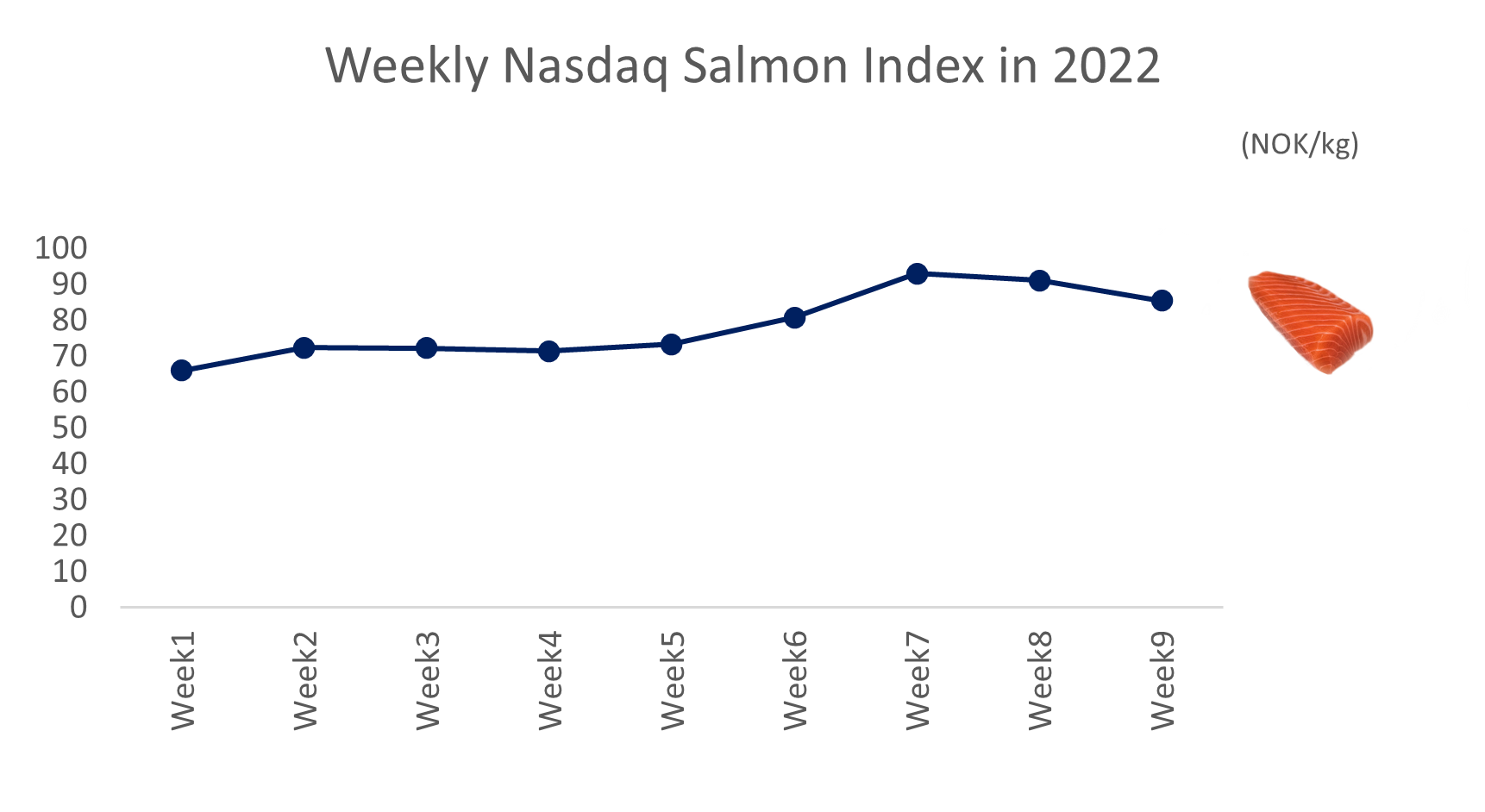Disruptions in Seafood Supply to Asia Amid Russia-Ukraine Tensions

Wheat and natural gas, the largest export commodities from Russia, are not the only ones that put economic headwinds across countries. While concerns over trade sanctions on Russia have grown considerably, the price of seafood from Russia to Asia is soaring. With Russia's retaliatory sanctions on airlines flying over its airspace, the seafood supply has been disrupted.
Soaring seafood prices in Asia
South Korea was one of the main importers of Russian seafood in 2021, after China’s restriction on seafood imports from Russia due to COVID-19. On March 6th, the retail price of pollock was KRW 2,538/kg (USD 2.06/kg), a 7 percent increase WoW. The price of snow crab, which accounts for 90 percent of seafood imports from Russia, has risen 22.8 percent in a week to KRW 19,900/kg (USD 16.17/kg). In addition, while the price of Norwegian fresh salmon fell by almost 5% on Week 9, wholesale prices of Norwegian salmon imported to South Korea are expected to rise by 60 percent from the average price on Week 9 to KRW 26,000/kg (USD 21.12/kg) due to logistics challenges. Neighboring Taiwan is also feeling the effects of the conflict, as according to the tridge’s local insights reported on March 6th, the price of Norwegian salmon to Taiwan has increased by 30 percent with the rise of tension.

(Source: Nasdaq Salmon Index)
Japan may be the next. According to Japan’s Fisheries Agency, while Russia takes up 60 percent of imported crab in Japan, the price increased by 20% from the beginning of March. Japan is also importing sockeye salmon from Russia, accounting for 80 percent of its total imports. Amid the massive death of sea urchins due to the red tide in Hokkaido that caused the price to soar last October, the Russia-Ukraine conflict may hurt many sushi restaurants in Japan.
Supply shortage
As a retaliatory measure against western sanctions, Russia has banned the European airlines from flying over Russian airspace. This has directly crippled the logistics routes for Norwegian seafood to Asia, such as fresh salmon, trout and live king crab.
The Norwegian Seafood Council reported that 75 percent of its exported mackerel flowed into the Asian market in February with high demand for Norwegian fish due to the uncertainty in the region. Thailand is amongst the largest markets for Norwegian trout, and South Korea, China and Japan for cod and mackerel. Due to the uncertainty, the supply is expected to be tightened.
On South Korea’s supply side, the Ministry of Oceans and Fisheries predicts that the supply of Russian pollock, accounting for 60 percent of its total imports, will not be a huge concern at least until mid-October, owing to 103,285 mt of current stocks. However, the supply of Norwegian salmon, as well as snow crabs and king crabs that fly over the Russian airspace, is expected to be in short supply.
External Risks
As sanctions on the Russian economy increase, logistics uncertainties will directly impact the seafood supply to Asia. On March 8th 2022, President Joe Biden announced that the United States will follow the EU and Canada in banning Russian flights from its airspace, which could continue to escalate the current situation.

